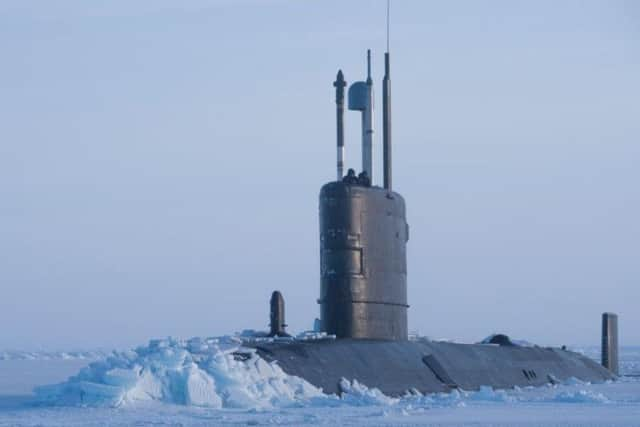Royal Navy submarine breaks through Arctic ice for major exercise
Ice Exercise 18 (ICEX) is a series of demanding trials in the frigid climate of the Arctic Circle, designed to test submariners’ skills in operating under the Arctic ice cap.
HMS Trenchant joins US submarines USS Connecticut and USS Hartford for the drills, co-ordinated by the US Navy’s Arctic Submarine Laboratory.
Advertisement
Hide AdAdvertisement
Hide AdThis combined team of military staff and scientists run the testing schedule from an ice camp established on an ice floe in the Arctic Ocean, north of Alaska.


Defence Secretary Gavin Williamson said: “The Arctic Ocean is one of the most unique and harshest environments on earth. The ability of our submarines to operate with our US allies here demonstrates how the Royal Navy is always on hand and ready to defend our nation anywhere in the world.”
The Ice Camp consists of a series of temporary shelters and houses up to 50 people from Britain, Canada and the US. Temperatures at the camp frequently drop to -40F.
Commander David Burrell, the Commanding Officer of HMS Trenchant, said: “This is a tremendous opportunity to really test our skills. Working alongside the US submarines is great for us. It is like dogfighting in an ice jungle.”
ICEX provides a perfect opportunity for UK and US submariners to learn and develop the skills to operate under the Arctic ice cap.


Rear Admiral James Pitts, US Navy, said: “With every ICEX we are able to build upon our experience and continue to learn the best way to operate in this unique and harsh environment. We are constantly testing new tactics under the ice and this exercise allows us to do this on a larger scale and alongside our UK, joint and academic partners.”
This allows the Royal Navy to test a series of equipment, notably sonar, against live ‘targets’ and to practice tracking and simulating attacks against other submarines.
Exercises such as this are said to be vital in maintaining the operational readiness of the Royal Navy’s submarine fleet and in maintaining the security of the North Atlantic and Arctic oceans.
Advertisement
Hide AdAdvertisement
Hide AdThe release comes amid escalating tension between Russia and the UK after the poison attack on former Russian spy Sergei Skripal and his daughter Yulia in Salisbury earlier this month.
First Minister Nicola Sturgeon declared this morning that Scotland was ready to deal with a future chemical weapons incident in the aftermath of the attack.
The SNP leader branded the nerve attack a “gravely serious issue” at First Minister’s Questions today, but said emergency services were prepared for a similar incident on the streets of Scotland.